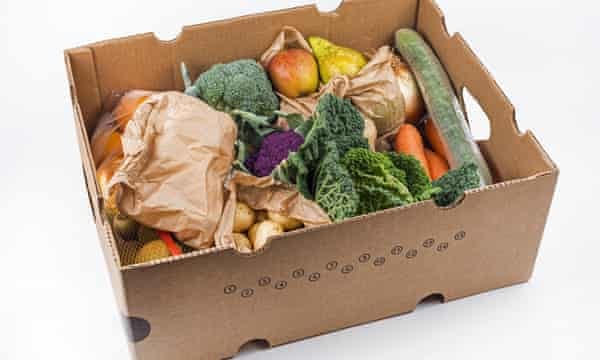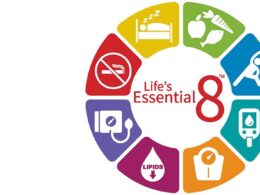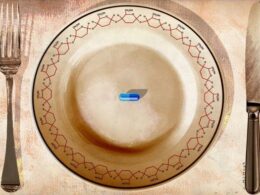Decades of healthy eating advice have failed to stem the tide of lifestyle-related disease. Could prescribing healthy food help?
‘We spend billions paying for medications or paying for surgeries that are essentially downstream consequences of unhealthy diets,’ says nutrition epidemiologist Prof Jason Wu.
Site editor:
Joaquim Cardoso MSc.
The Health Strategist — research, strategy and implementation
September 24, 2022
The Guardian
Bianca Nogrady
Sun 18 Sep 2022
Emma’s type 2 diabetes diagnosis turned her life upside down. “It is like having a baby that never grows up,” she says. “It is nagging at you as soon as you wake up.”
Every single morsel of food has to be carefully chosen in case it sends her blood sugar levels spiking, which could cause her to pass out or worse.
The ideal diet for someone with Emma’s condition would include lots of fresh fruit and vegetables, wholegrains, nuts and seeds, lean meat and fish, and reduced-fat dairy.
That diet has been shown to slow down or even reverse the progression of type 2 diabetes and help prevent it happening in the first place. But that has been a diet she has struggled to access.
The ideal diet for someone with Emma’s condition would include lots of fresh fruit and vegetables, wholegrains, nuts and seeds, lean meat and fish, and reduced-fat dairy.
That diet has been shown to slow down or even reverse the progression of type 2 diabetes and help prevent it happening in the first place. But that has been a diet she has struggled to access.
What if such a diet could be prescribed in the same way as medication, as a prescriptive intervention, subsidised by government, readily available and with plenty of support and information, to help prevent or treat disease?
The idea of “food as medicine” is gaining traction around the world as scientists and doctors look for ways to use food in a targeted fashion to improve health.
The idea of “food as medicine” is gaining traction around the world as scientists and doctors look for ways to use food in a targeted fashion to improve health.
Healthy food is not just important for diabetes, …
… says Prof Jason Wu, a University of New South Wales nutrition epidemiologist and head of the nutrition science program at the George Institute for Global Health in Sydney.
He says many of the “top killers” in western societies, from diabetes to cardiovascular disease and some cancers, are linked to lifestyle “and diet is really one of the major causes”.
He says many of the “top killers” in western societies, from diabetes to cardiovascular disease and some cancers, are linked to lifestyle “and diet is really one of the major causes”.
Decades of campaigns on healthy eating have failed to make much of a dent in Australia’s worsening rates of obesity and type 2 diabetes. Wu and many others say the problem is systemic barriers — such as cost, availability, accessibility and education — that no amount of public health messaging advocating for healthy diets can overcome.

Advocates believe better targeted, supported and funded prescriptive approaches are needed and that’s where the idea of food as medicine comes in.
Wu and colleagues recently conducted a study involving 50 people with type 2 diabetes who were finding it hard to afford enough food.
The group were “prescribed” a free box of fresh fruit, vegetables, wholegrains, lean meats and dairy — delivered to their home every week.
They also had regular access to a dietician and were given recipes and advice on how to prepare healthy food using the ingredients.
Emma was one of the study participants. “I would open up these boxes and it was things that I hadn’t eaten in a long time or things that I just didn’t think were an option,” she says.
Instead of a burger for breakfast, she started eating fruit; instead of chips, she had nuts and seeds.
The study lasted only three months, but in that time the “produce prescriptions” made a big improvement to diet quality and food security for those involved.
And there were other unexpected benefits: overall, the participants showed improvements in their cholesterol levels and lost weight, and also ate less unhealthy food.
The study lasted only three months, but in that time the “produce prescriptions” made a big improvement to diet quality and food security for those involved.
And there were other unexpected benefits: overall, the participants showed improvements in their cholesterol levels and lost weight, and also ate less unhealthy food.

The affordability problem
Wu wants to see food as medicine become an intrinsic part of healthcare, in prevention and treatment of disease.
It is not to suggest one can eat themselves out of terminal illness but food can have a powerful effect on health and some disease.
“The reason why we use food as medicine is because healthcare needs to shift,” he says.
“Within healthcare itself, healthy food and honestly just healthy physical activity does not get anywhere near enough attention it should get.”
“Within healthcare itself, healthy food and honestly just healthy physical activity does not get anywhere near enough attention it should get.”
He’s pushing for food prescriptions to become subsidised and accessible in the same way as a pharmaceutical prescription.
“We spend billions and billions of dollars every year paying for medications or paying for surgeries that are essentially downstream consequences of unhealthy diets,” Wu says.
He says some of those healthcare dollars should be diverted to pay for, or subsidise, evidence-based healthy foods for patients with these kinds of lifestyle-related diseases and particularly those who are already experiencing food insecurity.
“We spend billions and billions of dollars every year paying for medications or paying for surgeries that are essentially downstream consequences of unhealthy diets,”
As well as prevention — such as switching from processed carbohydrates to wholegrains to avoid pre-diabetes developing into the full-blown disease — some studies suggest food prescriptions be used for people already affected by a disease.
For example, a recent study from the University of Newcastle found a daily handful of almonds helped relieve constipation in people with kidney disease undergoing the blood-filtering process haemodialysis.
…a recent study from the University of Newcastle found a daily handful of almonds helped relieve — constipation in people with kidney disease undergoing the blood-filtering process haemodialysis.

Clare Collins, a nutrition and dietetics professor at the University of Newcastle, says she would like to see nutrition managed care plans
… — similar to the mental health treatment plans currently subsidised by Medicare —…
.. that give people access to dieticians and nutritionists who can help overcome at least some of the barriers to healthy eating.
At the moment, a Medicare-subsidised chronic disease management plan — for management of diseases such as type 2 diabetes — includes the option of a single appointment with a dietitian as one of a large variety of allied health professionals available for limited number of subsidised appointments.
“If you really want to help someone, totally change the trajectory,” she says.
“It’s not going to be getting one of five visits and a prescription; it needs that whole support structure.”
While Collins isn’t opposed to the idea of food prescriptions, she says it doesn’t go far enough in addressing the systemic barriers that make it difficult for people to eat a healthy diet.
“It’s not going to be getting one of five visits and a prescription; it needs that whole support structure.”
Barriers can be as fundamental as kitchens.
In developing their No Money No Time healthy eating website, Collins and her colleagues discovered many people didn’t even have the ability to properly prepare healthy food.
Some only have one shelf in a refrigerator, others have a benchtop kitchen only and some might only have a kettle, microwave or sandwich press.
“Imagine someone comes along with that kind of situation and the doctor says, ‘you go away and eat more vegetables and fruit’,” she says.
Another barrier to implementing a food-as-medicine approach is the accessibility and affordability of healthy food itself.
Dr Kelly Lambert, a dietician specialising in kidney disease at the University of Wollongong, says accessibility is a vexed issue.
“We don’t even need to be thinking about remote communities; it could just be downtown Dubbo for example, where I know that is a real issue,” she says.
Affordability of fresh produce was challenging even before the recent cost of living crisis.
Lambert highlights such initiatives as the Supplemental Nutrition Assistance Program in the US, which provides subsidised access to healthy food — in the form of a card that can be used to buy food at particular retailers and supermarkets — for low-income households and individuals, two-thirds of whom are families with children.
Philanthropic organisations such as the Rockefeller Foundation are putting money into addressing this too.
The foundation has recently committed US$105m over three years to “increase access to healthy and sustainable foods for 40 million underserved people around the globe”.
“They’re a little bit further ahead than us in terms of using this food-as-medicine concept and providing healthy meals and groceries to particularly disadvantaged communities,” Lambert says.
She would like to see these approaches aimed at Australians with health conditions such as type 2 diabetes and high blood pressure, and those who are overweight or obese, “because those three big diseases drive the majority of chronic illness in Australia”.
The simplest approach would be to subsidise access to fresh vegetables.
“[Vegetables] have such a powerful effect from a health perspective, yet there is such a common perception that they’re unaffordable — and these days they potentially are in some communities,” Lambert says.
Since the UNSW study ended, Emma has been missing it — especially when something as simple as a lettuce became unaffordable.
“I really miss those basic things — I miss broccoli, cauliflower, all of that,” she says. She has reverted to some of her old “stodgy” foods, because they are cheaper.
Those weekly deliveries helped her manage her diabetes and improved her insomnia. “It sounds so cliched, but obviously it was night and day,” Emma says. “I took it as a gift.”
Originally published at https://amp.theguardian.com.
Photograph: Diego Fedele/AAP
Names mentioned:
Prof Jason Wu, a University of New South Wales nutrition epidemiologist and head of the nutrition science program at the George Institute for Global Health in Sydney.
Clare Collins, a nutrition and dietetics professor at the University of Newcastle
Dr Kelly Lambert, a dietician specialising in kidney disease at the University of Wollongong,












